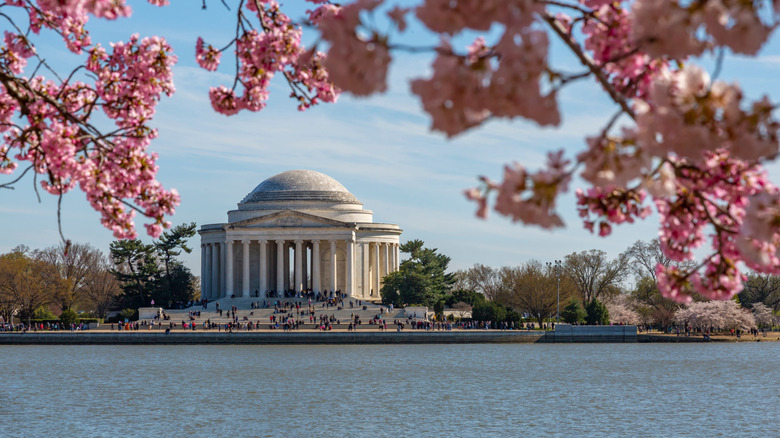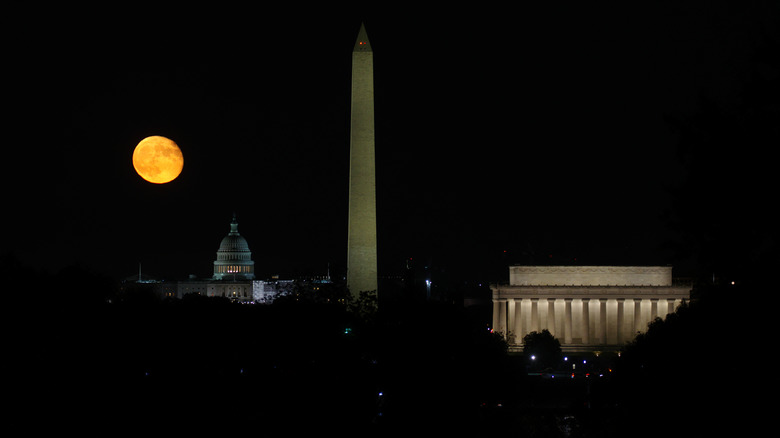This Wildly Popular City Has The Highest Robbery Rate Of Any U.S. City (Here's What You Should Know Before Visiting)
After two stolen chained electric bikes and a murder on my street in the same year, I knew it was time to move out of Washington, D.C. Granted, the city is heaven for art and history buffs due to its many free and world-class museums and memorials, and I'll never stop recommending it to travelers. But before you plan your trip, it's worth understanding D.C.'s crime rates and knowing which neighborhoods to explore and which to avoid.
In 2025 so far, from January through to mid-October at the time of writing, 1,095 robberies, 113 homicides, 717 assaults with a deadly weapon, and 3,394 motor vehicle thefts have taken place in D.C. Crime in the nation's capital made international headlines in August, when President Donald Trump took over the city's police force and deployed the National Guard in an attempt to curb high rates of violent crime (a move whose legality is being debated). Those rates are declining overall — though violent crime still regularly occurs in D.C.
While it is true that fewer violent confrontations have occurred in D.C. since Trump's intervention, those that do are more likely to end in death than a decade ago. "Lethality has climbed significantly," Ernesto Lopez, a senior researcher with the Council on Criminal Justice, told WTOP News. "We look back to 2012 lethality — again, that share of violence that ended a homicide — that increased by over 300% from 2012 to 2024, even [if] the homicide rate drops. So the violent situations can be getting less frequent, but when those violent situations occur, they [are] more likely [to] end in a fatality than over a decade ago." For tourists, this means that you're better off avoiding some neighborhoods completely. Going east of the Anacostia River, particularly in Wards 7 and 8, is not a good idea, especially at night. No major tourist spots are in this area, though.
Choose wisely where to stay around Washington, D.C. to avoid violent crime
The area around D.C. isn't as rife with crime as the capital itself. When I moved, for example, I didn't have to go far — Arlington, a quiet city with significantly lower crime rates than D.C., is just on the other side of the Potomac. It's easy to travel between D.C. and Arlington, too: A 20-minute bike ride already had me in Georgetown. Many suburbs outside the city in both Virginia and Maryland are just as quiet and safe. Plenty of hotels and Airbnbs are located in Arlington, and with the metro or a 10-minute Uber ride, you can get to Downtown D.C.
If you do want to stay in D.C., stick to central Northwest neighborhoods like Dupont Circle, Georgetown, Capitol Hill, or Foggy Bottom. Fortunately, most of the city's museums and memorials are clustered in this area. That said, the National Mall and its nearby museums are best avoided after dark. The Washington Monument's glow can be stunning at night, but the surrounding expanse is pitch black, so walking all the way to the center of the park is not worth it. Be mindful, too, that regular political protests might also make your trip complicated.
It was no surprise to me to meet several D.C. locals who carry pepper spray. It is legal to carry and use pepper spray in the capital, as long as it's for self-defense, contains approved active ingredients, and meets the city's packaging and labeling standards. However, be careful if you usually use guns for self-defense. Open carry is prohibited in D.C., and regulations are tighter than in the average U.S. state, so it's best to leave them at home if you're planning a trip to the nation's capital.

